For those of you who want to know how to process coffee at home, I put it into a quick video outlining the seven steps it takes to get from the tree to your mug of choice:
Transcript:
My friend Steven did a “2 Minute Technique” video recently, which was great. However, this video clocks in at 2.5 minutes, meaning I have 25% MORE CONTENT for the same low price.
Okay – after doing some really long coffee processing videos, let’s break it down into seven steps without the extra jokes, raps, failures and witty dialog between a sexy couple.
Step 1: pick some ripe coffee cherries!
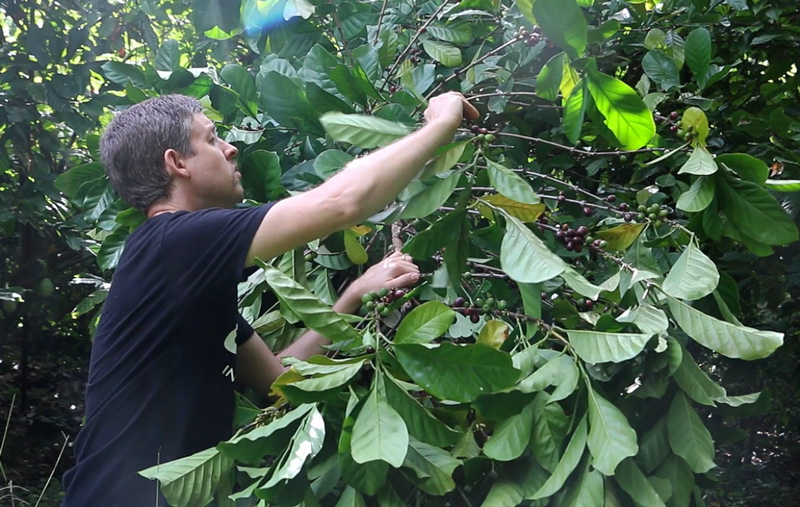
Our trees need pruning for easier harvest but we still managed to pick close to a gallon of cherries in about 20 minutes.
Step 2: Once you’ve picked your coffee cherries, remove the beans from the fruit.
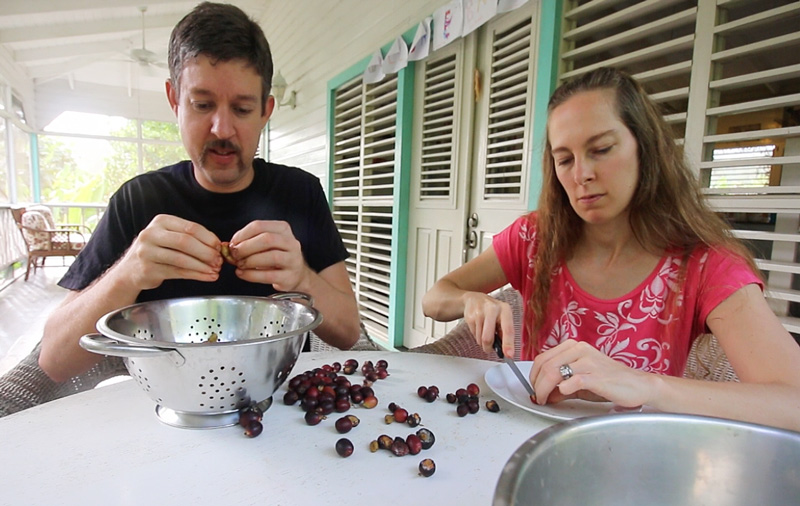
We did this the hard way – me with my teeth and Rachel with a steak knife, but there are much easier ways, such as crushing and grinding the fruit with a thick board on concrete or by soaking overnight to loosen the fruit from the bean.
Step 3: take your beans and throw them into some water for a day or two.
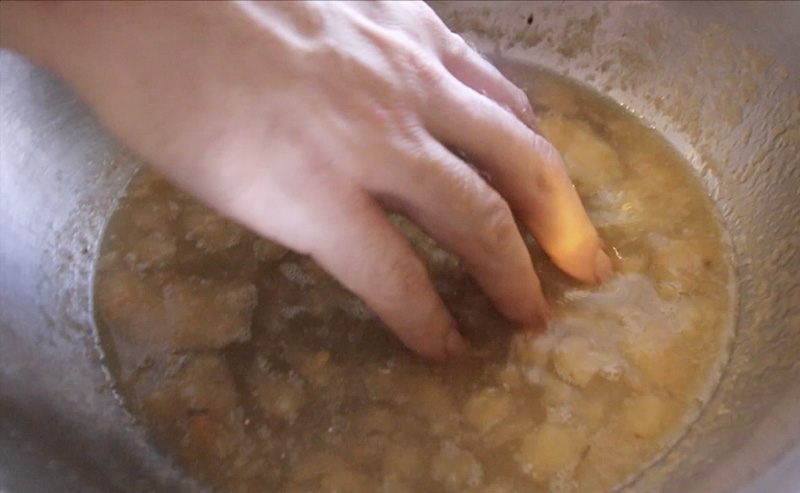
This will ferment away the slimy layer on the beans. When they feel rough between your fingers instead of slick, you’ve got it. Rinse them off and then proceed to step four.
Step 4: Dry the beans.
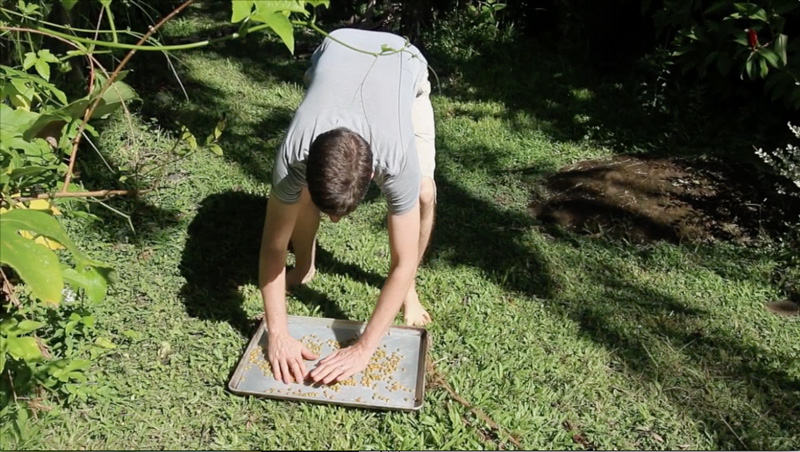
If you want to store the green beans for any period of time, it’s important to dry them quite well so they don’t mold. This can take days in the sun. We didn’t bother as we were heading right to roasting. Instead, we dried the beans for a few hours, then went to step 5.
Step 5: remove the parchment layer.
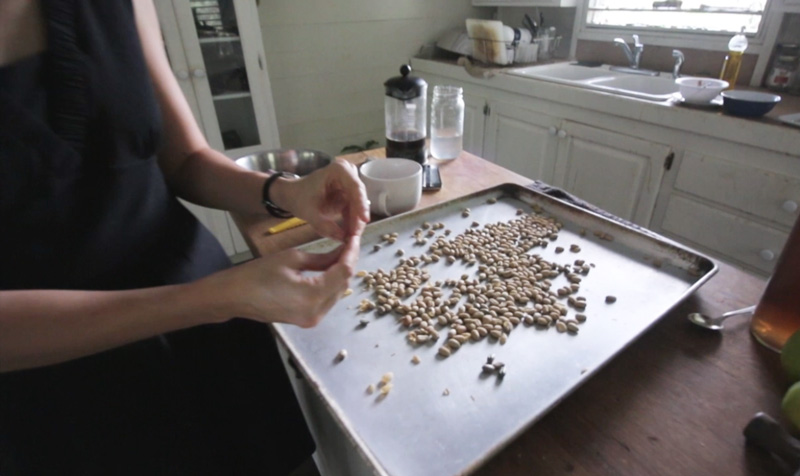
The parchment layer is a rough, tan layer that surrounds the beans. Peel it off!
Step 6: Roast the beans.
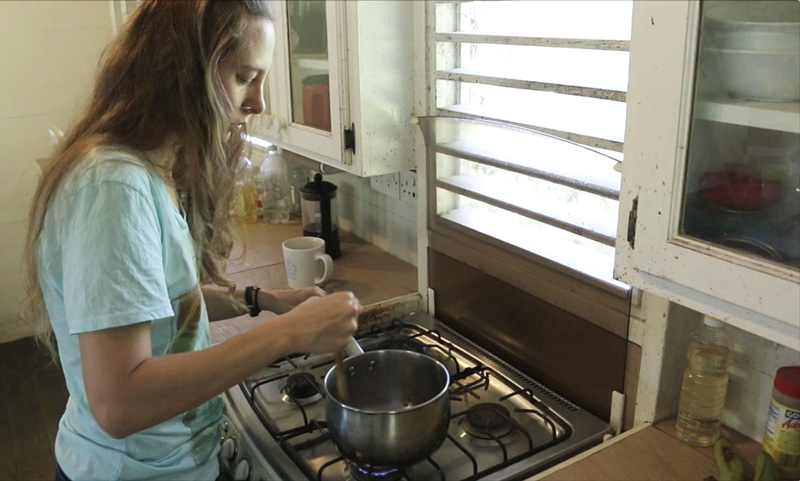
We roasted the beans in a stainless steel pot over medium heat, stirring constantly, but there are many other ways to do this. You can bake the beans in the oven or use a popcorn popper. We don’t have a popcorn popper and we wanted to closely monitor the progress so we simply toasted ours in a pot over the burner.
Step 7: Grind the coffee
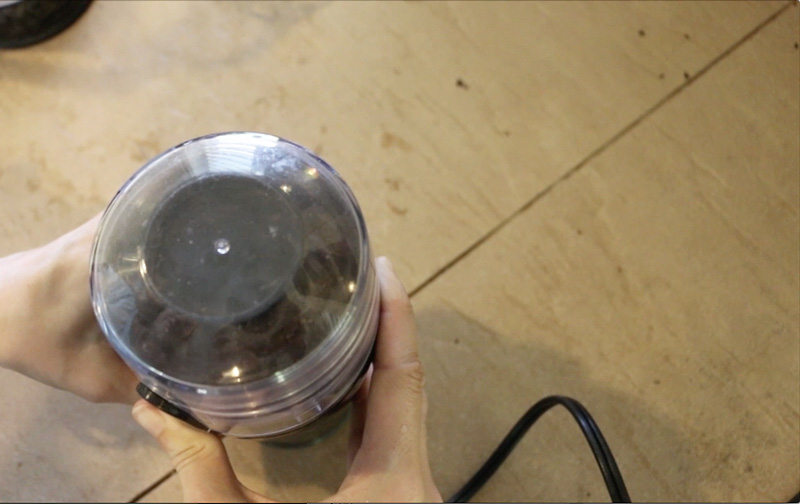
There are hand-cranked machines but we used a little electric espresso grinder instead which works like a charm.
Now you can brew your coffee however you like and enjoy some homegrown goodness, from tree to cup.
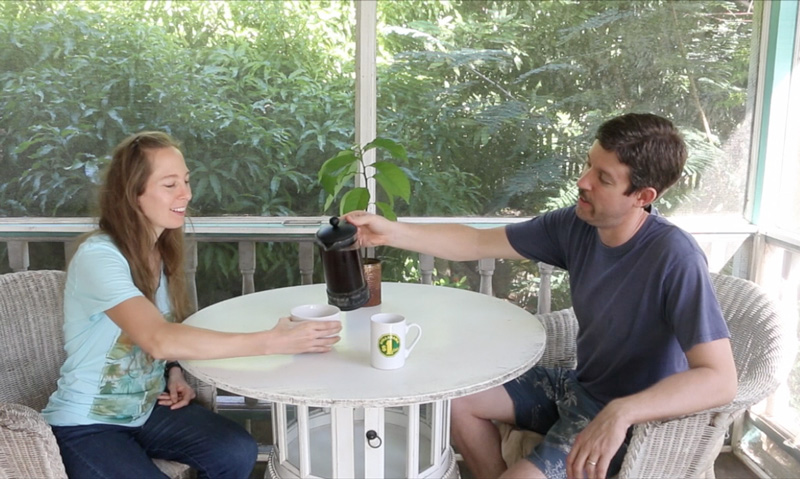
Thanks for watching – catch me on the web at TheSurvivalGardener.com and be sure to check out my $2 booklet The Survival Gardener’s Guide to Growing Your Own Caffeine. Until next time, may your thumbs always be green.
How to Process Coffee at Home: The Long Version
Before I edited and released “How to Process Coffee at Home” the short version, I captured a lot more of the process in a series of three videos. If you enjoy rapping, random jokes, long processing scenes and random cuts, well, you’ll enjoy these much more than the short video.
And, if that isn’t enough for you, I also did a 2.5 minute rap version:
Lyrics:
Step one is fun – it’s my favorite, so savor it
Picking cherries from the trees if you please
And dropping them in a sack to bring back to the plantation
In our tropical nation, and it’s a true revelation
How much work needs to be done
Till that percolator runs, son
Step two – time to peel the fruit off the seeds
And this takes a ton of time – it’s a crime
To do it like we did – I won’t kid
Cracking cherries with your teeth? Call the coffee police
Put a board on the concrete and mash ‘em flat
and save time with that
Step three, the fruit is sticky and slick
So soak for a day or two and that does the trick
The power of fermentation from slimy to rough
It ain’t tough just let em sit, then wash a bit and your golden with dreams unfolden
Step 4, it’s time for more, get those beans in the sun to dry
Gotta cap that parchment layer and here’s why
cause it keeps the beans inside a shell
Split it off and you’ll do well
Which is step five where you peel all the seeds because you needs to unleash the inner bean so green with a fine jade sheen I’m lovin it, uncoverin it, now we’re almost done – light the fire and we’ll get to the fun
Step five, now we strive, to toast these beans until we get a fine roast, at most, we want to cook them through and get the room a bit smokey, no jokey, I don’t want ‘em black or green but right in the middle cause the taste is keen
Step six, grind ‘em up, we got a little grinder and my wife is finer than a beauty queen, drinking bowls of coffee till she’s floating on a cloud of caffeine, but first, gotta get to step seven java heaven
Seven, brew the roast. We use a French press that’s the best for flavor, and now we savor, the rich homegrown and we’ve shown you all the steps of coffee, from tree to cup and what’s up with the long process to caffeinated bottoms up. That’s a wrap – or a rap as I tap out the beats as we pick and process the beans that give rise to the inspiration and innovation of a hip-hop conversation about the seven steps to getting some delicious Joe… fo show.
And finally…
Yesterday I managed to get some of the garden beds cleaned up, as promised, and will hopefully finish that soon and get planting again. And I have cocoa to harvest, too. That will be fun.
Have a great Thursday, everyone.


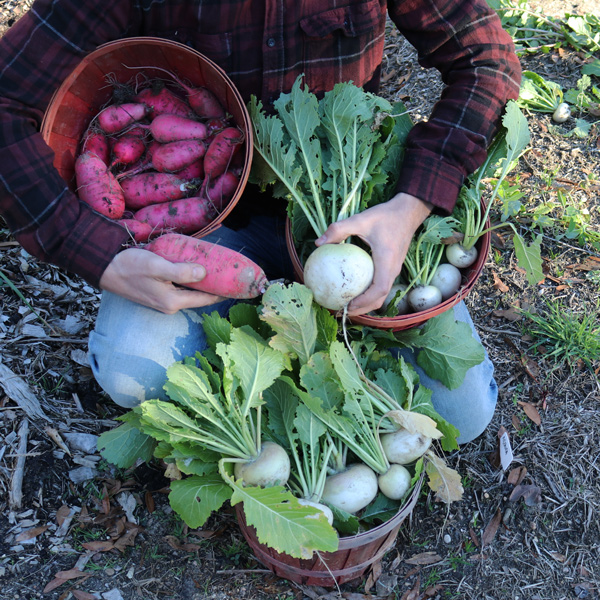 You can have greener thumbs by this weekend!
You can have greener thumbs by this weekend!
6 comments
As always, great job, David!
For the time being, I have a hard time keeping ONE coffee shrub alive at home, but who knows, maybe someday…
Blue mountain coffee, eaten by bats, the guano gone through by the workers so the coffee beans are saved, cleaned, roasted and onto the customer. It is a very good coffee with a smooth flavor, seems to have the cream built in, low of fruitiness. Ten years ago it was $40.00 a pound, I could not justify it. Luckily my friends Gil and Cynthia, coffee sellers made a gift of a pound. It was used for special occasions.
you guys sure do it the hard way.
for removing the beans from the cherries, i use a meat grinder, minus the grinding blades. works great. but you still have to separate them by hand.
for getting off the parchment i use a food processor with either plastic or steel blades (varies from make to make).
then outside with a winnowing tray (or big bowl) and a fan to winnow them.
Sounds like a good idea – thank you.
[…] short search with Google found some instructions, which I more-or-less followed. Some things, of course, did not go to plan — but then, they […]
What if all the beans float. Does that mean that the whole harvest is no good?
Comments are closed.